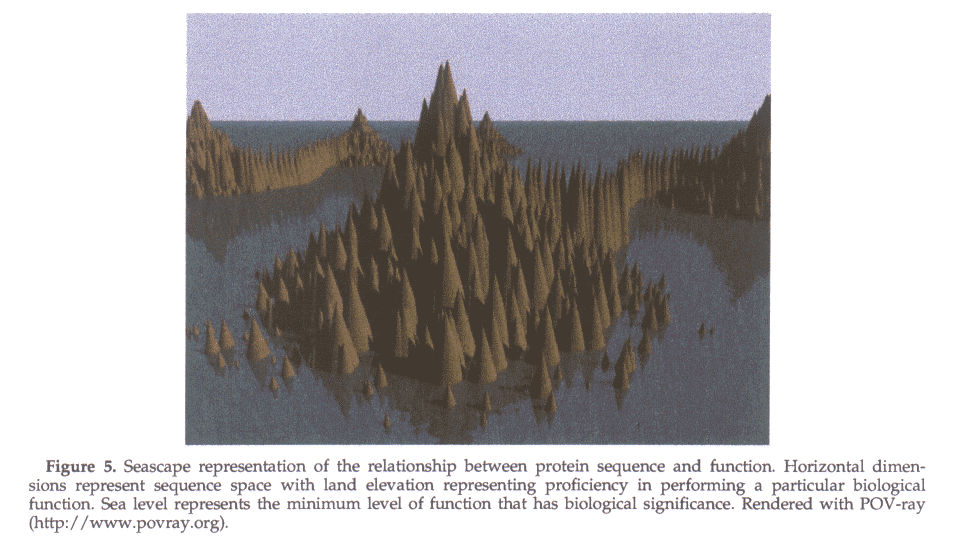Different molecules give different answers
Early expectation that data from more molecules would lead to a clearer answer "began to crumble a decade ago when scientists started analyzing a variety of genes from different organisms and found that their relationship to each other contradicted the evolutionary tree of life derived from rRNA analysis alone."The problem is particularly bad with respect to major domains and kingdoms of life. Microorganisms are found to be a mosaic of components and genes. The hypothesis of a "simple" last common ancester has not been validated by the data.J. Lake, R. Jain, M. Rivera, Science283 (1999), p 2027-2028."With more and more sequences available, it turned out that most protein phylogenies contradict each other as well as the rRNA trees"
H. Philippe and P. Forterre, Journal of Molecular Evolution 49 (1999), p509-523."No consistent organismal phylogeny has emerged from the many individual protein phylogenies so far produced. Phylogenetic incongruities can be seen everywhere in the universal tree from its root to the major branchings within and among the various [groups] to the makeup of the primary groupings themselves".
C. Woese, Procedings of the National Academy of Sciences 95 (1998), pg 6854-6859."Clarification of the phylogenetic relationships of the major animal phyla has been an elusive problem, with analyses based on different genes and even different analyses based on the same genes yielding a diversity of phylogenetic trees."
M. Lynch, Evolution 53 (1999) p 323.
"Each new prokaryotic genome that appears contains dozens, if not hundreds, of genes not found in the genomes of its nearest sequenced relatives but found elsewhere among Bacteria or Archaea."W. Ford Doolittle Science 286, 1999.Phillippe and Forterre performed perhaps the most rigorous and unbiased analysis, limiting their analysis to only the sequences which they believe evolve very slowly. Their analysis points to a cell with a nucleus as the last common ancestor.
H. Philippe and P. Forterre, Journal of Molecular Evolution 49 (1999), p509-523.Woese believes that the common ancester was "an evolutionarily communal state of living systems in the sense that the aboriginal organismal community evolved as a collective whole, not as individual cellular lineages".
C. Woese, Procedings of the National Academy of Sciences 97 (2000), pg 8396.Hope for a basis for organizing molecular data into a tree of life (ancestor-decendent relationships) is dwindling. This is attributed by some to lateral gene transfers.
the incongruities "are sufficiently frequent and statistically solid that they can neither be overlooked nor trivially dismissed on methodological grounds." ... "It is time to question underlying assumptions".Moreover, a recent analysis indicates that, even away from the active site, enzymes can tolerate very little variability before loss of function. This seems to challenge the idea of continuous variability within sequence space, even for nominally closely related sequences.C. Woese, Procedings of the National Academy of Sciences 95 (1998), pg 6854-6859."Perhaps it would be easier, and in the long run more productive, to abandon the attempt to force the data the Zuckerkandl and Pauling stimulated biologists to collect into the mold provided by Darwin."
W. Ford Doolittle, "Phylogenetic Classification and the Universal Tree", Science 284 (1999), p 2124-2128."Now new hypotheses, having final forms we cannot yet guess, are called for."
W. Ford Doolittle, "Uprooting the Tree of Life", Scientific American 282 (Feb. 2000), p 90-95."One of the key assumptions about the origin of life is under fire. The widely held belief that all life on Earth today originated from a single ancestor cell is being challenged by a theory that several different lineages evolved independently.
In his "doctrine of common descent" Darwin was the first to argue that all life on the planet began with single "primordial form", generally interpreted nowadays as the first living cell. Not so, says Carl Woese of the University of Illinois at Urbana-Champaign. In a controversial new theory published this week, he argues that the three fundamental types of cells that form the building blocks of present-day life actually evolved independently, not in an orderly succession from a common ancestor.Andy Coghlan, New Scientist, 22 June 2002, pg 10.
"Contrary to the prevalent view, then, enzyme function places severe constraints on residue identities at positions showing evolutionary variability, and at exterior non-active-site positions, in particular. Homologues sharing less than about two-thirds sequence identity should probably be viewed as distinct designs with their own sets of optimizing features."Many patterns are consistent with morphology-based phylogenies, but patterns that conflict with morphology-based phylogenies also are found:D. D. Axe, J. of Molecular Biology, 2000, 301, 585.
The results of this analysis are presented in the "seascape representation" below:
functional islands
Tree of life (simple to complex, ancestor-descendent) versus independent clusters (major taxa separate, easily distinguishable)
1996 study using 88 protein sequences grouped rabits with primates instead of rodents1998 analysis of 13 genes in 19 animal species placed sea urchins among the chordates
1998 study based on 12 proteins put cows closer to whales than to horses
cited by J. Wells in Icons of Evolution, 2000, pg 51.
Key prediction of common ancestry - increasing divergence on the molecular level with increasing taxonomonic distance (time from last branching point)
